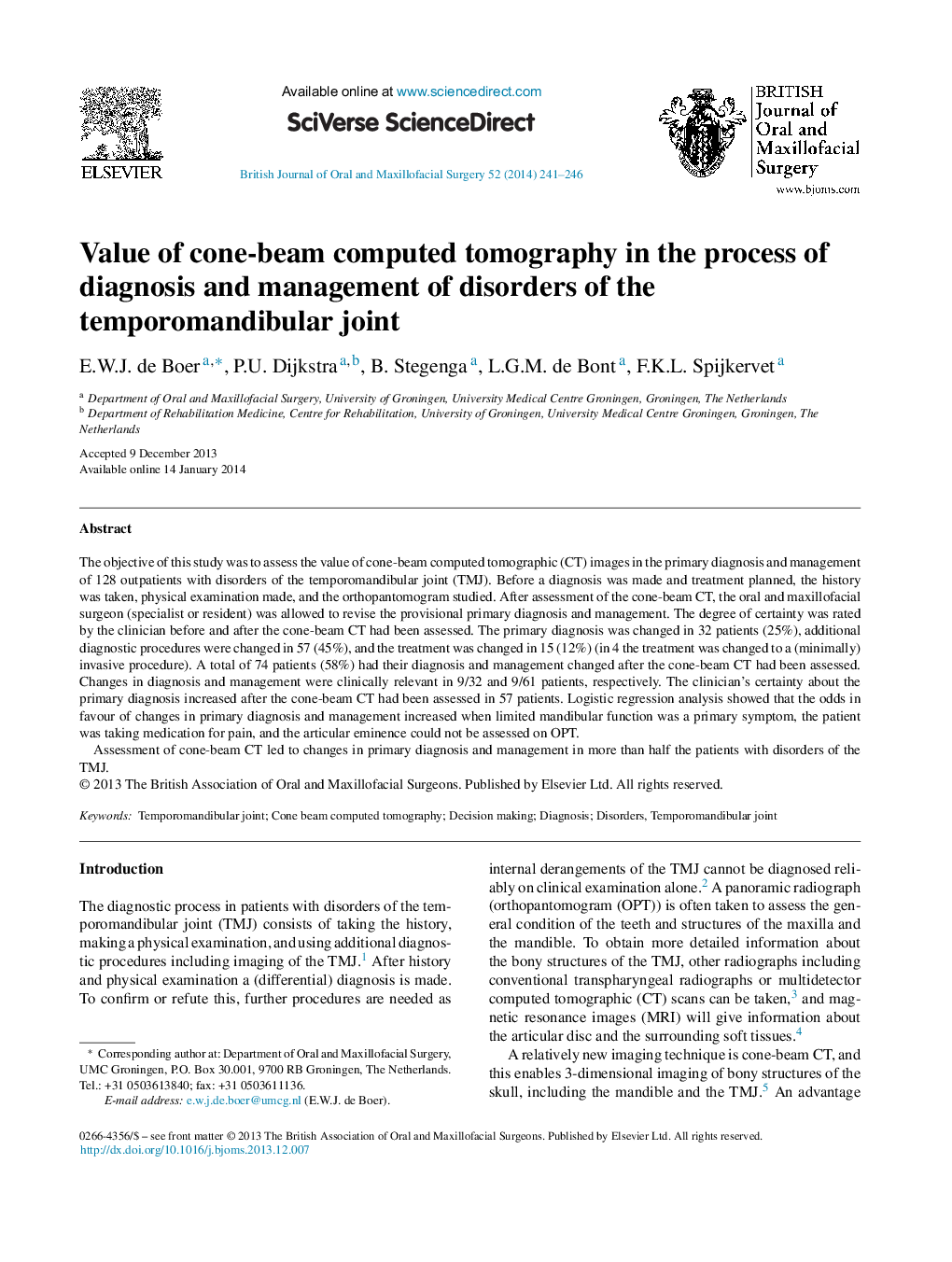| Article ID | Journal | Published Year | Pages | File Type |
|---|---|---|---|---|
| 3123893 | British Journal of Oral and Maxillofacial Surgery | 2014 | 6 Pages |
The objective of this study was to assess the value of cone-beam computed tomographic (CT) images in the primary diagnosis and management of 128 outpatients with disorders of the temporomandibular joint (TMJ). Before a diagnosis was made and treatment planned, the history was taken, physical examination made, and the orthopantomogram studied. After assessment of the cone-beam CT, the oral and maxillofacial surgeon (specialist or resident) was allowed to revise the provisional primary diagnosis and management. The degree of certainty was rated by the clinician before and after the cone-beam CT had been assessed. The primary diagnosis was changed in 32 patients (25%), additional diagnostic procedures were changed in 57 (45%), and the treatment was changed in 15 (12%) (in 4 the treatment was changed to a (minimally) invasive procedure). A total of 74 patients (58%) had their diagnosis and management changed after the cone-beam CT had been assessed. Changes in diagnosis and management were clinically relevant in 9/32 and 9/61 patients, respectively. The clinician's certainty about the primary diagnosis increased after the cone-beam CT had been assessed in 57 patients. Logistic regression analysis showed that the odds in favour of changes in primary diagnosis and management increased when limited mandibular function was a primary symptom, the patient was taking medication for pain, and the articular eminence could not be assessed on OPT.Assessment of cone-beam CT led to changes in primary diagnosis and management in more than half the patients with disorders of the TMJ.
